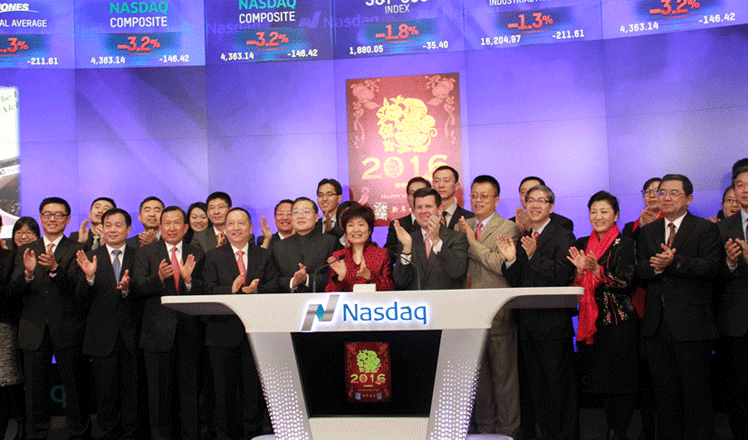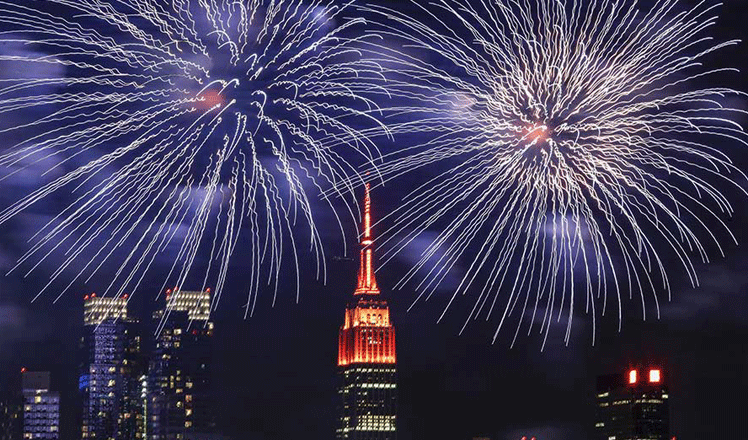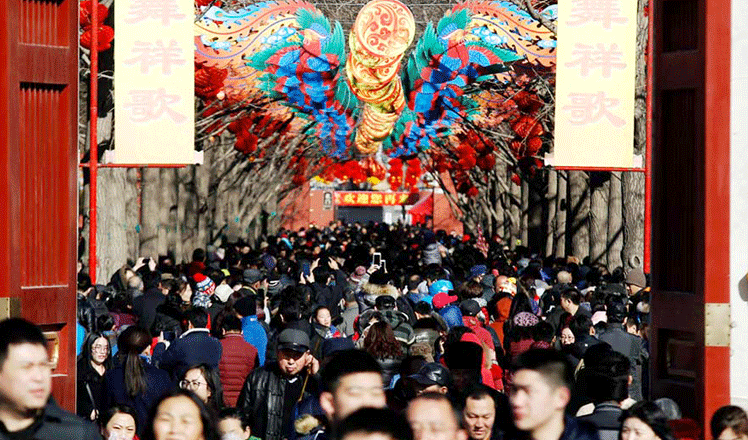Essence of napa
Updated: 2016-02-10 15:21
By Dong Fangyu(China Daily)
|
|||||||||
California wineries are getting more serious about the Chinese market. Dong Fangyu samples some of the New World's best tipples at a recent Beijing seminar and wine-tasting
|
The iconic Napa Valley welcome signs greet visitors as they enter the valley from the north and south; vineyard view of the Napa Valley appellation in California, America's most famous wine region. Photos Provided By Napa Valley Vintners |
It was a decision that shook the wine industry: a panel of judges in Paris declaring in effect that France's wines were not the world leaders they were cracked up to be.
In fact, several of the country's finest wines had been eclipsed by unheralded drops from California's upstart wine industry, including two from Napa Valley, 120 kilometers north of San Francisco.
Next year will mark the 40th anniversary of that wine tasting, which has since taken on an almost mythical air, being called the Judgment of Paris, and becoming the subject of at least one book and two feature films. The results of that blind tasting, presided over by a panel of highly respected judges and subject to much controversy, were reported in Time magazine on June 7, 1976, and summarily dismissed as nonsense by many in the French wine industry.
It marked a turning point in the California wineries' efforts to be taken seriously, and in the nearly four decades since that competition, those US vintages have built a solid reputation.
Nevertheless, it has been only in recent years that wine connoisseurs in China have begun to avert their eyes and noses from the undoubted attractions of French wines, discovering that their Californian counterparts can match the world's best. Last month, representatives of 14 California wineries came to China to meet wine professionals and wine lovers, holding a series of tastings and seminars in Beijing, Chengdu, Nanjing and Shanghai. The aim was to promote Napa Valley, now the most celebrated wine-producing region of the United States.
"Many Napa Valley wineries attach great importance to increasing the visibility of our wines in China," said Vivien Gay, international sales manager of Silver Oak Cellars, one of the vintners on the tour.
Why haven't Napa Valley wines already built a bigger following in China? Lu Jiang, a Beijing wine critic and consultant, said that not only have they been under-promoted, their competitors have been more wily.
"Vintners from other countries such as Australia, France and New Zealand are much more active in promoting their wines here."
Lu said he set up his own company, Wine Online Culture, to promote wine culture in China 10 years ago.
Pascal Xue, cellar manager of a Tianjin importer, Cave D'emma, said: "Since 2007 we have imported mostly French and other Old World wines, but we are now looking for potential vintners from Napa Valley to work with.
"Napa wines are generally fruitier and sweeter, and that's more to the liking of Chinese palates."
Family vineyard
Napa Valley is one of the world's smallest wine-growing regions, with only one-eighth the planted acreage of Bordeaux, yet it said to have the most diverse and complex soil and geology.
Napa Valley Vintners, a non-profit trade association, says Napa Valley harvests just 4 percent of California's wines by volume, yet the appellation is responsible for about 30 percent of the economic impact of wine in the state. Ninety-five percent of wineries in the valley are family-owned.
Because of Napa's long growing season, and the complexity of the climate and soils, its wines are said to have rich, deep fruit and suppleness while, as one expert puts it, "maintaining a nice balance on the palate".
Scott Meadows, general manager of Silenus Winery in Napa Valley, added: "These wines are very approachable and enjoyable to drink when young, and provide the flavors that Chinese consumers are looking for and pair well with all kinds of Chinese food."
Fongyee Walker, a wine educator and consultant in Beijing, says Napa wines can also age exceptionally well. However, in a wine-tasting seminar she joked: "I think this is the big problem when we talk about aging Napa wine. The trouble is it tastes so damn good, young. Who wants to put it in the wine cellar and leave it when it's so delicious?"
At a recent tasting in Beijing, Augustin Huneeus, proprietor of Quintessa winery brought his Quintessa 2005 Red Blend. The wine was favored by many attendees for its softness and roundness.
"2005 was a great, great vintage of Napa Valley," said Augustin Huneeus, proprietor of Quintessa winery. "The moderate weather lasted into November - a really late harvest for Napa Valley. It was the best vintage, I think, of the decade. Napa Valley's Mediterranean-type climate produces consistent results across vintages and almost always ensures that the grapes ripen as the winemaker desires."
Apart from quality, another label that Napa growers happily attach to their wines is one of exclusivity. That is because Napa wines are so rare, accounting for just 4 percent of the entire California wine production and only 0.04 percent of worldwide wine production.
"This exclusivity and rareness makes them more attractive to the Chinese market than an easy-to-get cheap wine," Meadows said.
Walker noted at the wine-tasting seminar that she occasionally sees fake Napa Valley wines on the Chinese market.
"If the front label of the bottle does not indicate the origin of Napa Valley, then it is probably not Napa wine," she said.
For most Californian wineries it is much less profitable to ship wines to China than to sell them domestically. This is mainly because historically US winemakers have relied less on exports because of high domestic demand.
But there seems to have been a subtle change of heart in recent years as US vintners have begun to realize the huge opportunities China's booming wine market holds.
"Only five percent of our wines were shipped outside US," Huneeus said. "So only a modicum of wine went to China, but we are investing on China's future market."
For him, a major task now is to find a good, resourceful importer to enter the Chinese market.
Lu, the wine consultant and educator, said that promoting Napa wines in China now, most of which are fine wines and quite expensive, can be challenging.
"Some moneyed Chinese investors are being too confident. Some acquired foreign wineries, only to find that fine wines did not sell as well as they had expected, due to the continuing austerity campaigns from the government.
"But the market is still promising in the long run. Napa wines have a proximity to Chinese people's minds - for example, the large number of the Chinese younger generation that studied in the US. Or business people who have worked in the US, say Silicon Valley. They may be the first consumers who would be very interested in knowing about Napa wines."
The main outlets for Chinese consumers buying wines are supermarkets such as Carrefour, neighborhood shopping centers and large online shopping websites. Wine lovers and individual fine-wine collectors can go to boutique wine shops to try before they buy, such as the popular Pudao Wines in Beijing and Shanghai.
Silenus Winery, the first Napa Winery to be bought by a Chinese-American company, started shipping wines to China in 2011. About 4,000 cases, each containing 12 bottles, were shipped to the country from Silenus last year. The company says its exports to China have been growing by about 10 percent a year.
"When I first came to China in 2011 and did tasting events or seminars, there were almost no younger Chinese in attendance," Meadows said. "However, in just the last four years I have seen the majority become young professional Chinese. Because of their youth, they are more interested in trying wines for quality rather than just price or image. I think this is a trend that will continue."
Another big change in China's wine market, Meadows said, is education. When he first came to China there were few wine schools or ways anyone could learn about wine.
"Now there are a number of very good schools with people who are very serious about becoming wine professionals. This is a very good trend as it will mean more and more people learn about and enjoy wine."
Wine tourism
Beyond the splendors of Napa Valley found in a bottle, another draw for Chinese people is the region's wine tourism.
"We are open to every wine lover; no matter whether you are visiting experts or tourists," said Meaghan Qian-Fu Becker, estate director of Quintessa. "If you want to have a tasting we will give you the wine. It is the atmosphere of Napa Valley, being very open and with great hospitality."
Wine consultant Lu, who has traveled through many famous wine regions over the past 10 years, said he has seen few places that match Napa Valley in the maturity and comprehensiveness of its wine tourism.
"There are winery tours and wine tastings. There are also the Culinary Institute of America, Michelin-star restaurants, world-class arts and galleries, shopping, music, spas, gardening and a lot more outdoor sports."
And all that is just an hour's drive from the charms of San Francisco.
If that were enough, another incentive for Chinese is new US visa policies that allow Chinese tourists and business people to apply for multiple-entry visas valid for up to 10 years.
"This will absolutely boost Chinese visits to California's wine regions," Lu said.
Contact the writer at dongfangyu@chinadaily.com.cn
(China Daily USA 02/10/2016 page9)
- General strike against pension reform brings Greece to standstill
- Madrid airport sounds alarm after bomb threat on Saudi plane
- Obama proposes new oil tax to fund clean transportation
- UN special envoy announces temporary pause of intra-Syrian talks
- Taliban kill 10-year-old hailed as militia hero
- Obama slams anti-Muslim rhetoric during first visit to US mosque

 Opening bell on Chinese New Year's Day
Opening bell on Chinese New Year's Day
 The world celebrates Spring Festival with China
The world celebrates Spring Festival with China
 Ditan Park temple fair embraces Chinese New Year
Ditan Park temple fair embraces Chinese New Year
 Xi Jinping grieves over Taiwan quake, vows aid
Xi Jinping grieves over Taiwan quake, vows aid
 Flash mob in monkey costumes appears in NYC to mark Chinese New Year
Flash mob in monkey costumes appears in NYC to mark Chinese New Year
 China's icebreaker 'Snow Dragon' reaches Ross Sea in Antarctica
China's icebreaker 'Snow Dragon' reaches Ross Sea in Antarctica
 Practice makes perfect for flag party on eve of Year of the Monkey
Practice makes perfect for flag party on eve of Year of the Monkey
 Spring Festival Eve dinners around China
Spring Festival Eve dinners around China
Most Viewed
Editor's Picks

|

|

|

|

|

|
Today's Top News
National Art Museum showing 400 puppets in new exhibition
Finest Chinese porcelains expected to fetch over $28 million
Monkey portraits by Chinese ink painting masters
Beijing's movie fans in for new experience
Obama to deliver final State of the Union speech
Shooting rampage at US social services agency leaves 14 dead
Chinese bargain hunters are changing the retail game
Chinese president arrives in Turkey for G20 summit
US Weekly

|

|









